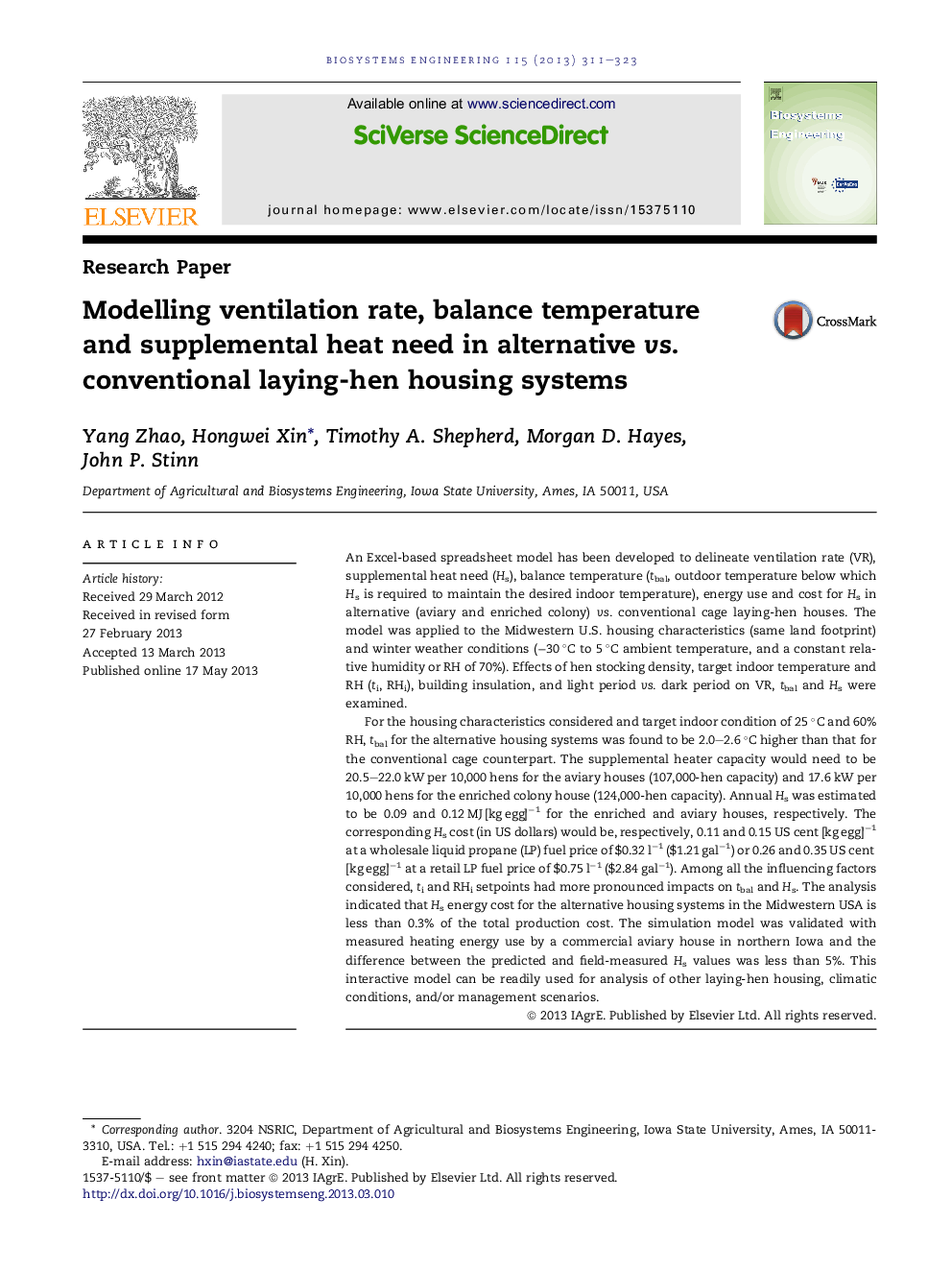| Article ID | Journal | Published Year | Pages | File Type |
|---|---|---|---|---|
| 1711331 | Biosystems Engineering | 2013 | 13 Pages |
•Alternative houses had 2–3 °C higher balance temperature than conventional house.•Heating cost in alternative houses accounted for <0.3% of total production cost.•Heating need per 10,000 hens was 20.5 kW for aviary, 17.6 kW for enriched house.•Indoor temperature or humidity setpoints greatly affected balance temperature.•Balance temperature for dark period was 18–20 °C higher than for light period.
An Excel-based spreadsheet model has been developed to delineate ventilation rate (VR), supplemental heat need (Hs), balance temperature (tbal, outdoor temperature below which Hs is required to maintain the desired indoor temperature), energy use and cost for Hs in alternative (aviary and enriched colony) vs. conventional cage laying-hen houses. The model was applied to the Midwestern U.S. housing characteristics (same land footprint) and winter weather conditions (−30 °C to 5 °C ambient temperature, and a constant relative humidity or RH of 70%). Effects of hen stocking density, target indoor temperature and RH (ti, RHi), building insulation, and light period vs. dark period on VR, tbal and Hs were examined.For the housing characteristics considered and target indoor condition of 25 °C and 60% RH, tbal for the alternative housing systems was found to be 2.0–2.6 °C higher than that for the conventional cage counterpart. The supplemental heater capacity would need to be 20.5–22.0 kW per 10,000 hens for the aviary houses (107,000-hen capacity) and 17.6 kW per 10,000 hens for the enriched colony house (124,000-hen capacity). Annual Hs was estimated to be 0.09 and 0.12 MJ [kg egg]−1 for the enriched and aviary houses, respectively. The corresponding Hs cost (in US dollars) would be, respectively, 0.11 and 0.15 US cent [kg egg]−1 at a wholesale liquid propane (LP) fuel price of $0.32 l−1 ($1.21 gal−1) or 0.26 and 0.35 US cent [kg egg]−1 at a retail LP fuel price of $0.75 l−1 ($2.84 gal−1). Among all the influencing factors considered, ti and RHi setpoints had more pronounced impacts on tbal and Hs. The analysis indicated that Hs energy cost for the alternative housing systems in the Midwestern USA is less than 0.3% of the total production cost. The simulation model was validated with measured heating energy use by a commercial aviary house in northern Iowa and the difference between the predicted and field-measured Hs values was less than 5%. This interactive model can be readily used for analysis of other laying-hen housing, climatic conditions, and/or management scenarios.
